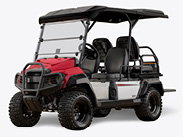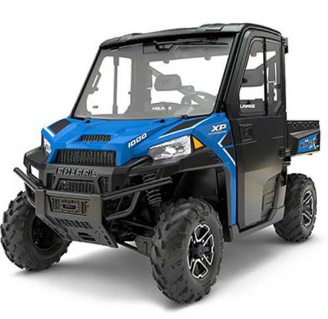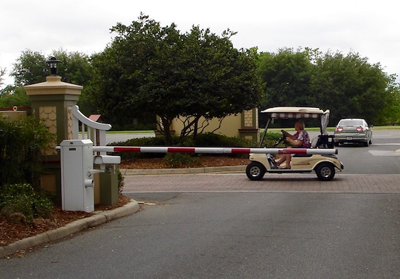Post Coronavirus Habitat and the Coming Wave of Vehicle Upgrades
Plus ca change, plus c’est la meme chose, or in English, the more things change, the more they are the same thing. This oft-cited aphorism contains much historical truth. But what about the post-coronavirus period which we may, hopefully, see very shortly?
My crystal ball sees an emerging lifestyle which is not the same. Its basis is underpinned by many technologies already in hand, but now impelled by a sense of urgency and by forced practice or implementation. The outcome of these forces, which are list and discussed below, results in what I would call a dispersed living lifestyle. Here are some of the aspects which lay the groundwork for this lifestyle:
- Remote worksites, otherwise known as working from home: Already quite common on a one or two day a week basis, will change to a one or two day a month trip to the office. It will also be the case that workers who always traveled to the worksite, but now, initiated via the lockdown, have been exposed to the remote work environment and will continue in the practice to the extent possible, with refinements in remote access continuing to simplify the process.
- Automated production and distribution: Yes, the concepts and actual systems are already well-advanced, and the advances will continue from self-navigating giant container vessels to driverless last mile delivery—in other words further automation up and down the entire supply chain. Factory automation and seamless distribution systems through the last mile complement the home office.
Gated communities are a prototype of the dispersed living lifestyle
Gated communities are a well-developed prototype for the dispersed living lifestyle. Gated communities are also a gateway to a pollution-free, congestion-free habitat, such as is impossible to find in cities for the most part. Gated communities provide a cluster of individual families and a distribution system that accommodates most of their basic needs.
Gated communities are largely self-contained and with regard to the “outside world” are particularly capable of controlling and monitoring entry and egress of traffic and pedestrians. In a world that will live under the shadow of COVID-19 and ever alert to the latest pandemic threat, this sort of control will have a significant priority.
Getting from point A to point B: The demise of mass transit
Another factor driving the dispersed living lifestyle is the inappropriateness of mass transit systems in the post-pandemic world. Mass transit was to be the answer to urban center issues of streets cluttered with individually-operated automobiles and the pollution generated by them. Unfortunately, mass transit does not answer the issue of disease contagion and control. Moreover, the whole purpose of mass transit is bring large numbers of people in close proximity to one another into workplaces where they would congregate—again in close proximity to one another.
Gated communities as models for dispersed living transit
In a dispersed living habitat, once again we can look to the gated community as a guide. Many, although not all, gated communities feature golf cars or personal transportation vehicles (PTVs) as the primary means of moving about. The emergence of PTVs as the principal market for golf car manufacturers has been going on now for several years, and one of the aspects of this trend has been the consistent upgrading of these vehicles to include many automotive features.
Given the trend in dispersed living and looking to the future in product and market develop expect to see:
- Continued increase in demand for PTVs;
- Upgrades will include audio systems, multipurpose, dash-mounted LCD panels as standard features, rather than add-on accessories;
- Automotive-type suspensions and disk braking systems become mainstream and standard;
- Vehicle interconnectivity, as well as self-driving features;
- Lithium batteries become the standard power source, fully displacing lead acid.
Newly-published market study from Small Vehicle Resource, LLC predicts PTV market growth at over 12% per year on average, thereby virtually doubling the market over the next five years. See smetzger@smallvehicleresource.com for more information.
Most of these features will apply to light duty utility vehicles for commercial and personal use. Expect to see last mile delivery vehicles as a variety of small, task-oriented utility vehicle, displacing large trucks currently operated by FedEx, UPS, and DHL. (DHL is currently testing electric, power-assist e-bike delivery vans in Miami.)
Current PTV models which provide the platform for urban/suburban mobility
The following vehicles are the types of vehicles that will further develop and address what we at Small Vehicle Resource (SVR) describe as the urban/suburban mobility (USM) market:
CANDIDATES FOR FURTHER UPGRADES AND DEVELOPMENT

Club Car Onward
The Onward has taken the market by “storm” and perhaps inspires the Special Edition product line named after various types of storms; e.g. Sandstorm, Snowstorm. The lifted version is very popular and the vehicle now comes with lithium batteries and some dealers have outfitted the vehicle to meet low-speed vehicle standards.

E-Z-GO 2Five LSV
The 2Five, introduced several years ago has yet to see its full potential. As an LSV it comes with a range automotive features that are required for certification, such as automotive grade windshield, turn signals and a backup camera. These will all be standard features in the USM market. It does not yet come with lithium batteries.

Yamaha Umax Rally
The UMax line from Yamaha are basically a utility vehicles. The UMax Rally 2+2 crosses the line into PTV territory. It has a range of amenities and stylistic features that make it adaptable to the USM market. Less visible component is the fully independent front and rear suspension, lending itself to further upgrades, including lithium power.

Polaris XP1000
Although the XP1000 is built for utility or trail riding, Polaris has equipped it with many features that should emerge as mainstream in the USM market. First, the Northstar model comes with a full enclosure cab system, which includes heat and air conditioning. The Ride Command system of electronics, features a touch screen in the dash panel for purposes of communication and interconnectivity. The gas engine will need to be replaced by an electric power train and lithium power.

Tomberlin Ghosthawk
The Tomberlin Ghosthawk is fully LSV compliant, featuring electric power steering, and a seven-inch LCD display and a rearview camera. Tomberlin has yet to choose a lithium battery supplier and much like similar models coming out of the traditional golf car manufacturing segment, lacks a hard enclosure with heating and air conditioning.
Merging of product line features across traditional golf-related and powersports industries
The inclusion of the Polaris Ranger XP1000 in this line-up points up two important aspects of small vehicle product and market development:
- The XP1000 is ahead of golf car manufacturers at this point with regard to its full enclosure (the Pro Shield Cab System) and Ride Command connectivity package;
- Golf car manufacturers are ahead of the powersports industry with regard to its electric power trains, LSV compliance, and adoption of lithium batteries (albeit hardly complete at this time).
The USM market needs all these types of features, and thus, it is highly likely that in terms of product development these two traditional industry segments will start to merge and become competitors. Our opinion and forecast at Small Vehicle Resource is that this will happen over the course of the next five years.


